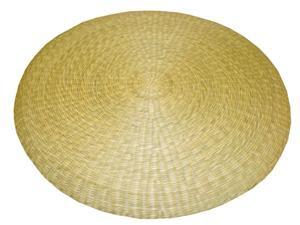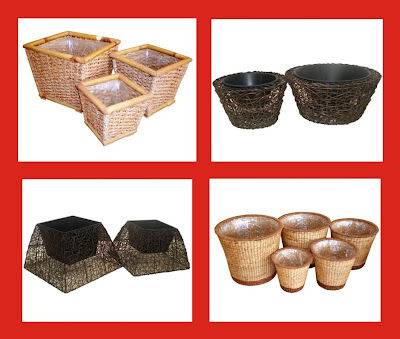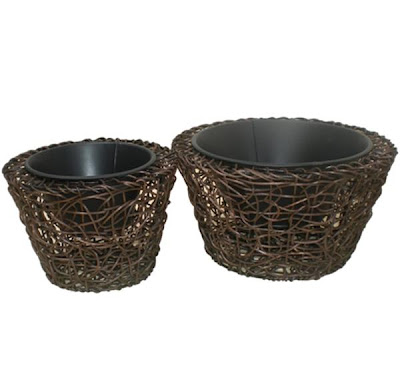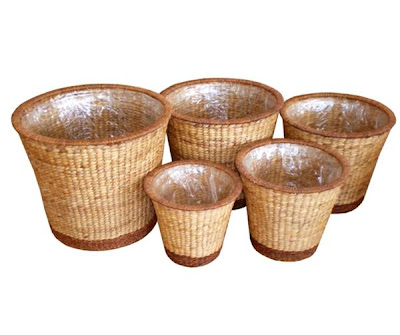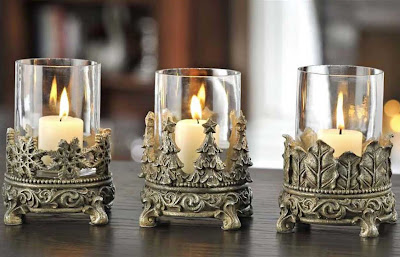Homes from the 1800s to early 1900s were special in that the home designs of large family estates were internally divided to create distinct environments. For instance, home owners had practical servant's quarters on the lower level floors near the kitchen, whereas the family's bedrooms were all situated upstairs. A powder room was often found downstairs and an en-suite bathroom was just off the parent's master bath. The children often lived down a hallway and in their own separate quarter of the house, so the parents could have a bit of privacy and reprieve.
Wednesday, December 29, 2010
home interior trend 2011
home interior trend 2011
Are you wondering what is new for home interior trends in '09? Perhaps you are looking to prep your house to sell, building a new property from scratch, expanding to a new office complex or you just need a change of scenery. Interior design jobs encompass a range of diverse styles, themes and tastes, although there are some clear trends emerging now that builders are allowing clients so many customizable options. This year, open floor plans will likely continue to flourish, along with more practical ideas to combine energy efficiency and frugality in a tasteful way.
Tuesday, December 28, 2010
home interior quality
Decorating a home can be one of the most exciting experiences in your life, but it can also be the most stressful. A home interiors catalog can be one of your best resources to find the best deals for your home. While a lot of shoppers are complaining about tired feet from walking around the different home improvement stores, you can enjoy shopping in the comfort of your own home!
There are several ways for you to find a home interiors catalog. There are hundreds of catalogs available online, or you can also get one through your mail. Bookstores, public libraries and coffee shops also carry these magazines for your home decorating needs. There is a wide range of home décor options for you to choose from, and being able to choose the best company that can provide you the highest quality as well as one with the best warranty.
Special offers and discounts are also available if you are able to take advantage of these publications.
If you are decorating your home for the first time, you would realize that it can be extremely difficult to know everything you need. The sections in the home interiors catalog are organized in a way that you can instantly find what you need for your home. Although you may have used the services of a professional interior decorator, it still helps to have some input and personality into your home, and this would be a great source.
For the ultimate shopper, a home interiors catalog is going to be a dream! Being able to choose from different brands, colors and styles will put them at an advantage. If you're not sure of how to improve the theme of your home, you can also find decorating advice in these magazines.
A lot of people are still going to home depots and furniture shops, but what they do not realize is that they can find a bigger assortment of home décor products in these catalogs. You will avoid having to buy something that you think you like but then run against products that you wished you saw first. You can also make sure that you are able to work within your budget, as most of the prices in a home interiors catalog are affordable and will not create a dent on your budget.
While buying and decorating a home can take a lot of your time and effort, shopping for the best products will not be as difficult with a home interiors catalog. Leafing through these pages in the comfort of your home is simple, time saving and convenient. Aside from that, you can also opt to mix and match styles, designs and colors with the products in the catalog! There are also several tips that will talk about cleaning and making your furniture always look brand new. Whether you use a home interior catalog online, through mail or your local bookstore, you can be certain that you will find the best deals for your home!
Sunday, December 26, 2010
5 BASIC STEPS TO CREATE A GLASS PAINTING
This interesting and unusual painting technique is also known as :
-Reverse painting on glass
-Glass painting
-Reverse painting
-Painting on glass
-Reverse glass painting
-Glass art
Step 1. GLASS AS A PAINTING SUPPORT
Both glass (or plastified glass) are non-absorbant painting supports which do not allow paint to easily adhere to them, apart from through the paint's own drying process.
For this reason the outline of a subject painted on glass needs to be simplified when applied to an extremely smooth surface.
Working the paint or changing outlines without smudging the surrounding areas of undried paint requires patience, as well as a certain amount of skill.
Simplifying a subject does not necessarily detract from the end result after the painting is completed. The final result often has an appearance similar to that of naive art, in which composition and form and a certain number of other details are simplified. Many artists will find that such simplification can actually be very appealing.
With patience and the development of their skills while using this painting technique, artists will find that applying and mastering the use of glass as a support will become easier as time progresses.
Step 2. PREPARING THE PAINTING SUPPORT
Choose a piece of clear glass (or plastified glass) in the dimensions you would like to work with and check carefully to make sure the surface is neither scratched nor flawed.
It is worthwhile remembering that a flaw in the glass itself will often detract from the finished appearance of a painting and may be impossible to remove after the completion of your artwork.
The sheet of glass that is to become your artwork constitutes the following:
(1) The ‘painting side’ - or the side you will be painting on.
(2) The ‘viewing side’ - or the side you will be looking at (or through) as you progress with your work, and after it has been completed.
To render the cutting edges of the glass safe, take a length of cellotape that will correspond to the length of one edge. Apply it carefully along that length (ideally so that it is folded equally over each side of the glass). Repeat this procedure for the other 3 glass edges. The edge of the cellotape will also help mark the outer limits of your artwork.
Clean the surface of the glass thoroughly with a glass-cleaning product. Use paper towelling or any cleaning material that will not leave dust or threads on your painting surface.
Store the glass where it will be safe. If placed between sheets of newspaper it will be protected from scratches and dust.
Step 3. MATERIALS REQUIRED FOR REVERSE PAINTING
Glass
Choose clear unflawed glass (or plastified glass) in the shape and size you wish to use. It is advised to choose smaller sizes to begin with.
Paints
It is necessary to use a paint that will adhere properly to the surface of the glass. Oil based paints or acrylics are often used for this reason. There are also opaque and transparent ceramic artist colours that have been especially manufactured for using on a non-absorbant surface. Metallic oil-based colours (eg. gold, silver or copper) can also be interesting to work with.
Paintbrushes
Choose a selection of small or medium-sized paintbrushes with fine, flat and pointed tips. Larger brushes can be used for working on a larger scale.
A penholder
It can be an advantage to use interchangeable nibs suitable for creating both thick and thin outlines.
A painting palette
Or something similar to mix your paint on.
A palette knife
(Optional) for mixing paint.
Artists paint cleaner or thinner
Used for cleaning or sometimes for thinning.
Fine linseed oil or drying agent
For mixing with oil paints to help speed up the drying process
Paper towelling
Or some clean rags
A mirror
(Optional) It can be used to check the progress of your painting while you are continuing to work. Place the mirror in a position where it will reflect your artwork from its viewing side. In this way progress can be observed without needing to turn the glass artwork around.
Or a similar average-width sticking tape
An easel
(Optional) to prop your work on
A glass-cleaning product
Step 4. CREATING OUTLINES
Art products in liquid form that are suitable for creating outlines on glass may be readily available in some countries. Oil-based paint, water-based acrylic and ceramic paint can also be used for this purpose. In order to create fine lines these paints must sometimes be thinned down in order to use with a pen nib or similar line-drawing tool.
To prevent lines from being effaced too easily use a paint that is oil based for creating the outlines of your subject if the paint you will be applying over the top of it (after it has properly dried) is water based.
Reverse this procedure if your outlines are created with a water-based paint.
Always use a liquid paint product that will provide the best adhesion possible to a glass surface.
Due to pen nibs clogging relatively easily attention must be paid to cleaning the nibs regularly.
Method 1.
If you have a steady hand you can use a freehand method for applying outlines directly onto the surface of the glass.
Method 2.
Use an original subject for your painting (e.g. a drawing) and place this under the glass, then copy it onto the glass surface.
Method 3.
Place a layer of carbon-paper on top of the glass then place your drawing on top of the carbon paper and with a pointed object trace the subject onto the glass.
Method 4.
A tracing table can be used for creating outlines.This is a table with a sheet of clear glass inserted into the top and with an electric light source situated beneath it. For those who frequently need to trace their work a tracing table can be very practical and useful.
Method 5.
You can omit outlines altogether.
Most artists have a preference for how to work when creating an artwork. Once you have decided whether to use a table easel, a standing easel or prefer placing your artwork either slightly propped up on a table or flat down, you will find it necessary to view your artwork regularly from its observation side in order to see its progress. Some artists simply take the glass in their hands and turn it around to look at it directly from its observation side. Others prefer to use a mirror placed directly opposite their working area so that they can observe their progress while they paint.
Mixing and blending
If you are blending colours, always do so on your palette before applying them to the glass. If colours are not well blended or mixed the result will be a streaky appearance in the paint on the observation side of the glass.
Avoiding smudges
It is important to watch out for smudges of paint, or particles of dirt or dust that may accidentally be transferred onto unpainted areas of your artwork as you are progressing. Unless removed these may appear as flaws that will show when viewing the artwork from its observation side. If they are also inadvertently covered with a layer of paint removing them afterwards may become very messy and difficult. When lifting off any smudges always be careful not to damage outlines or other areas of paint you have already applied.
Step 5. APPLYING THE PAINT
Once the outlines of your subject have thoroughly dried you can begin to apply paint to fill in the remainder of your artwork. Keep in mind that applying layer on layer of paint on a non-absorbant surface needs to be done carefully in order to avoid one layer lifting off the preceding one. For this reason ample drying-time should be allowed between layers.
Painting the subject of a reverse painting on glass requires a different approach to that of a normal painting method. In the case of a reverse painting on glass it is necessary to paint the subject or subjects situated in the foreground first, and those in the background afterwards. You will therefore normally begin by painting more detailed objects first, e.g. eyes, faces, figures or other foreground objects. This also means that if you wish to sign your artwork you will need to begin by applying your signature.
For practical reasons it is best to begin working from the centre of the artwork outwards in order to avoid your hands having to touch the glass surface more than necessary. To watch your progress from the viewing side of the glass, carefully turn your artwork around from time to time, or use a mirror as indicated in Step 3.
Keep in mind:
- That your artwork will be observed from the opposite side to the one you are painting on.
- That you are painting in reverse, therefore foregrounds precede backgrounds.
When applying the reverse painting method it is best to think carefully about the sequence in which your painting will develop before beginning to apply your paint. This will help create the methodical approach that is necessary for this particularly interesting and also intricate painting technique.
Saturday, December 25, 2010
kids glass patern
Glass painting Chicken Pattern
Pillows Natural Handicraft
 Pillows handicrafts from natural materials adorn many a house or a room with natural and stylish minimalist design, this is done to give the impression of a beautiful and blend with the concept that has been made. With rounded forms, pillow handicrafts from natural materials is interesting and unique
Pillows handicrafts from natural materials adorn many a house or a room with natural and stylish minimalist design, this is done to give the impression of a beautiful and blend with the concept that has been made. With rounded forms, pillow handicrafts from natural materials is interesting and uniqueThursday, December 23, 2010
Simple Natural Chair
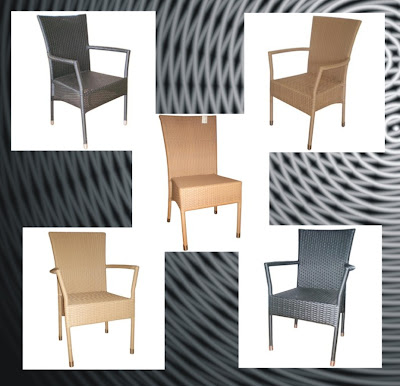 Natural chair at this time many public interest. Besides the price is relatively cheap, natural seat is also environmentally friendly, easy and cheap in maintenance. Various forms of natural seat with a simple model and can be placed wherever they are. with the minimalist design, this natural chairs can be used as furniture for the house with a minimalist design or in a small house.
Natural chair at this time many public interest. Besides the price is relatively cheap, natural seat is also environmentally friendly, easy and cheap in maintenance. Various forms of natural seat with a simple model and can be placed wherever they are. with the minimalist design, this natural chairs can be used as furniture for the house with a minimalist design or in a small house.Tuesday, December 21, 2010
Unique Christmas Candle Holder
Labels:
Candle Holder,
Collection,
Handicraft Design,
Unique
Furniture Handicraft Collection
Labels:
Collection,
Handicraft,
Handicraft Design,
Handicraft Product
Sunday, December 19, 2010
Unique Natural Basket
Labels:
Basket,
Handicraft Product,
Handmade,
Homemade handicraft,
Natural Craft,
Natural Handicraft,
Natural Rattan,
Unique
Friday, December 17, 2010
Christmas candle Handicraft
Labels:
Candle Holder,
Handicraft,
Handicraft Design,
Handicraft Ideas
Wednesday, December 15, 2010
Antique Silver Helm
Labels:
Antique Silver,
Handicraft Product,
Handmade,
Homemade handicraft,
Natural Art,
Natural Craft
Monday, December 13, 2010
Antique Christmas Candle
Labels:
Antique,
Antique Handicraft,
Candle Holder,
Handicraft,
Handicraft Ideas
Subscribe to:
Posts (Atom)





















